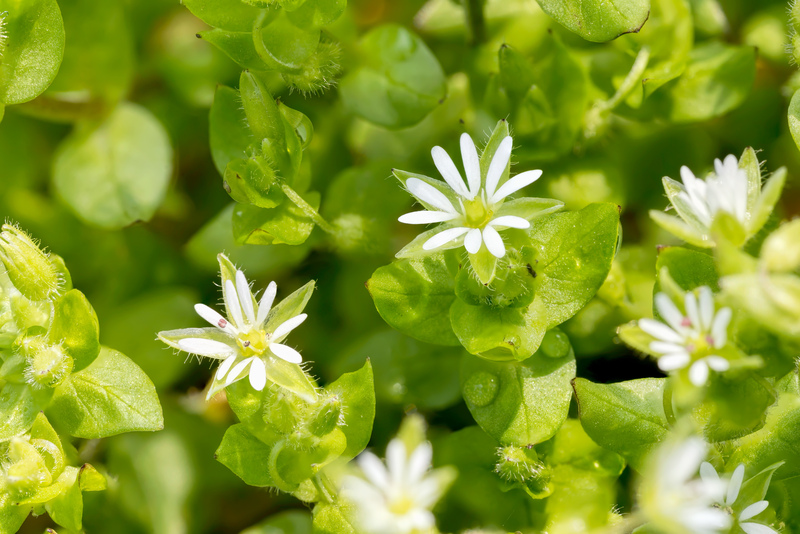Vertical Gardening: Solutions for Small Spaces
Posted on 28/06/2025
Vertical Gardening: Innovative Solutions for Small Spaces
Are you facing a lack of space for gardening at home? Vertical gardening solutions for small spaces are transforming tiny apartments, urban balconies, and even compact patios into lush, green retreats. By taking the garden upward, anyone can enjoy fresh air and greenery, regardless of square footage. In this article, we'll uncover everything you need to know about vertical gardens--from the basic concepts and benefits, to step-by-step guidance and maintenance tips. Let's climb higher and discover how you can maximize your available space with beautiful and productive vertical gardens!

What Is Vertical Gardening?
Vertical gardening is the practice of growing plants on structures that rise vertically--making it a perfect solution for small urban spaces. Instead of spreading plants horizontally on the ground, you use a wall, trellis, shelves, or other upright supports. Vertical gardening benefits include maximizing space, improving air quality, and creating visually stunning green displays in areas that might otherwise be unused or overlooked.
Why Choose Vertical Gardening for Small Spaces?
- Space Efficiency : Vertical gardens allow more plants in less area, ideal for apartments or balconies.
- Enhanced Aesthetics : Add a splash of green to dull walls, fences, or balconies instantly.
- Better Air Quality : Plants filter pollutants, which is crucial in urban environments.
- Improved Mental Health : Surrounding yourself with greenery reduces stress and increases happiness.
- Year-Round Gardening : With vertical gardens, you can grow edible or decorative plants indoors or outdoors all year.
Types of Vertical Gardens for Small Spaces
There is a wide range of vertical gardening ideas suitable for various spaces. Whether you're a beginner or an expert gardener, there's an option to suit your needs and style.
1. Wall-Mounted Planters
Wall-mounted planters are among the most popular vertical gardening solutions. These systems typically use modular pockets, felt panels, or mounted pots to hold soil and plants securely. They're easy to install and well suited to balconies, patios, and even kitchen walls for growing herbs.
2. Trellis and Climbing Planters
Trellises and climbing planters provide vertical support for vining plants, such as peas, beans, cucumbers, and decorative ivies. These structures can be freestanding or fixed to a wall or fence, creating a living green screen that is both functional and beautiful.
3. Shelf Gardens
Using shelves allows you to organize multiple small planters in a vertical arrangement. This method is especially effective for small balconies or indoor spaces, providing easy access to all plants and ensuring each gets enough sunlight.
4. Pallet Gardens
Recycled wood pallets are a sustainable and affordable way to build a vertical garden. Secure landscape fabric or mesh to the back and underside of the pallet, fill with soil, and plant in the open slats. Lean it against a wall for a rustic, eco-friendly garden.
5. Hanging Gardens
Hanging planters or vertical hanging garden towers use suspended pots, baskets, or fabric pockets. They're perfect for trailing plants, strawberries, or flowers, adding texture and interest overhead without taking up precious surface space.
Best Plants for Vertical Gardening in Tight Spaces
Not all plants thrive in vertical conditions. Here are excellent choices for vertical gardening in small spaces:
- Herbs: Basil, parsley, thyme, oregano, mint, and cilantro--all grow well in compact containers and are easy to access in the kitchen.
- Leafy Greens: Lettuce, spinach, Swiss chard, and arugula have shallow roots and are perfect for wall-mounted planters or shelf gardens.
- Vining Vegetables: Cucumbers, peas, beans, and cherry tomatoes thrive with trellis support.
- Strawberries: These compact, trailing fruits grow beautifully in hanging pockets or towers.
- Succulents and Ferns: Great choices for decorative walls, requiring minimal soil and maintenance.
- Ornamental Plants: Petunias, pansies, begonias, and trailing ivies add color and interest to vertical arrangements.
Step-by-Step Guide: Creating Your First Vertical Garden
1. Plan Your Vertical Garden Space
Measure the wall, fence, or area you want to green. Consider sunlight, wind exposure, and water access. Decide whether your garden will be indoors, on a balcony, or outside.
2. Choose the Right Vertical Gardening System
Select from wall-mounted pockets, trellis, shelving, or pallets based on your available space, desired look, and level of DIY commitment.
3. Select Suitable Plants
Match plant species with the amount of sunlight and space. Remember, herbs and leafy greens often thrive indoors, while climbing veggies and flowers usually need more sun.
4. Gather Supplies
- Vertical garden system (planters, felt pockets, trellis, etc.)
- High-quality potting mix
- Plants or seeds
- Watering can or drip irrigation setup
- Fertilizer (organic, if possible)
- Wall anchors and fixings (for mounted systems)
5. Assembly and Installation
Assemble your vertical gardening unit according to instructions. Secure it to the chosen surface, ensuring it's stable and safe. Fill containers with potting mix.
6. Planting
Arrange your plants, considering their growth habits and sunlight requirements. Taller plants can go toward the bottom, with trailing or smaller plants above.
7. Watering and Feeding
Vertical gardens dry out faster than ground-level beds. Consistent watering is crucial, especially for systems with small or fabric pockets. Consider an automatic drip irrigation system for convenience in larger installations.
Tips for Success With Vertical Gardens in Small Spaces
- Start Small: Begin with a single wall panel or a few shelves before expanding.
- Light Matters: Most edible plants need at least 4-6 hours of sunlight. Supplement with grow lights if indoors.
- Proper Drainage: Ensure all planters have drainage holes to prevent root rot.
- Monitor Watering: Small containers dry quickly. Check moisture daily, especially in hot weather.
- Fertilize Regularly: Nutrients leach out of small soil volumes faster; use a balanced, slow-release fertilizer as needed.
- Rotate Plants: If sunlight isn't even, periodically rotate planters or trays for uniform growth.
- Pest Management: Check for pests regularly; treat with organic solutions to avoid residue in herbs or vegetables.
- Maintenance: Prune and harvest plants frequently to encourage new growth and prevent over-crowding.
Vertical Gardening Ideas for Every Small Space
Apartment Balconies
Use rail-mounted planters, slim hanging shelves, or even a vertical herb wall. Mix flowers with veggies for a vibrant miniature garden.
Indoor Living Spaces
Install a vertical planter as living art on the living room or kitchen wall. Grow a mix of herbs, succulents, or ferns for chic green decor.
Outdoor Patios or Fences
Attach pallet gardens or trellises to a fence or exterior wall. Grow tomatoes, beans, or climbers to create privacy screens and edible walls.
Window Sills
Stack narrow shelves vertically beside a sunny window or use suction-cup planters directly on glass. Grow microgreens, basil, or oregano within easy reach.
Common Challenges and Solutions in Vertical Gardening
-
Watering Issues:
- Top rows tend to receive more moisture--consider installing a drip system or watering carefully from above.
- Self-watering planters can help keep soil moist longer.
-
Uneven Light:
- Indoor vertical gardens may need supplementary grow lights installed overhead or to the side.
-
Support & Weight:
- Ensure your wall or structure can safely bear the weight of moist soil and mature plants.
- Use lighter potting mixes and lightweight planters if necessary.
-
Nutrient Deficiency:
- Fertilize regularly and watch for signs of nutrient deficiency like yellowing leaves or stunted growth.
DIY Vertical Gardening: Affordable and Fun Projects
Building your own vertical garden system can be budget-friendly and highly satisfying. Here are a few inspiring ideas:
- Recycled Bottle Gardens: Cut holes in plastic bottles, add soil and plants, and hang them with string or attach to a trellis for a creative mini-garden.
- Old Shoe Organizer Planters: Repurpose a cloth shoe organizer for herbs and flowers. Hang it on a fence or balcony railing for instant results.
- Gutter Gardens: Mount sections of old rain gutter horizontally on a wall or fence; fill with soil and sow leafy greens or strawberries.
- Ladder Shelf Garden: Prop a wooden ladder against a wall and place pots on each rung--a movable and charming solution for small outdoor spaces.

Frequently Asked Questions About Vertical Gardening in Small Spaces
-
Can vertical gardening work indoors?
Yes! With adequate light (natural or LED grow lights), indoor vertical gardens flourish with herbs, ferns, or succulents. -
How do you water vertical gardens?
Carefully pour water at the top or use a drip irrigation system. Be sure excess water drains out and doesn't pool at the bottom. -
What are common mistakes to avoid?
Overwatering, poor drainage, choosing unsuited plants, and neglecting sunlight are the most common pitfalls. Start modestly, and adjust your approach as you learn. -
Do I need special soil?
Use high-quality potting mix for containers. It needs to be lightweight, well-draining, and rich in nutrients. -
How can I add vertical gardens to rented spaces?
Use freestanding shelves, rail planters, or tension-rod shelves--these don't damage walls and are easy to remove when you move.
Conclusion: Greening Small Spaces With Vertical Gardening
Vertical gardening solutions for small spaces provide an exceptional opportunity to enjoy gardening, no matter the size of your home or apartment. From lush balcony walls to compact kitchen herb gardens, going vertical maximizes your space and brings the soothing power of plants into everyday life.
With a little creativity and the right know-how, you can transform unused walls, fences, or railings into productive and beautiful vertical gardens--boosting your mood, cleaning your air, and adding a unique green style to your surroundings. Start small, learn as you grow, and watch your garden reach new heights!
Ready to start your own vertical garden in a small space? Share your projects and inspirations in the comments, and help others discover the endless possibilities of vertical gardening!
Related Topics
- Container Gardening Tips
- Grow Lights for Indoor Herbs
- Sustainable Gardening Ideas
- DIY Garden Decor for Tight Spaces

